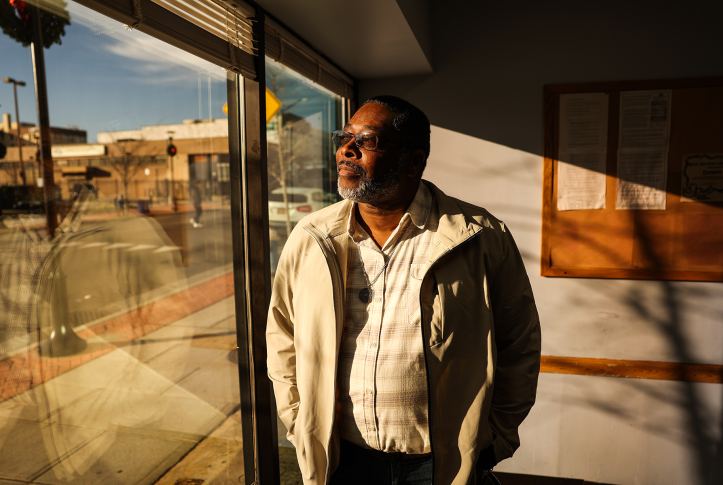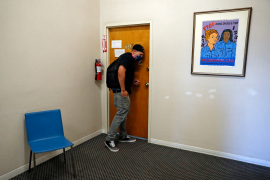Nearly half of all Americans will have a behavioral health issue in their lifetime, from a mood disorder to a substance use problem. Behavioral health care encompasses a wide variety of interventions delivered by many different types of providers. In the U.S., nearly all these providers are in short supply.
The scarcity of behavioral health professionals is undermining people’s ability to get timely care. This is reinforced by historical underinvestment in behavioral health care by public insurance programs (like Medicaid and Medicare), private insurers, and employers — including lack of coverage and low reimbursement rates. In 2021, fewer than half of people with a mental illness were able to access timely care; those with substance use disorders were even less likely. Some groups are disproportionately impacted by workforce shortages:
- Many rural areas and economically stressed cities have few, if any, behavioral health care providers. For example, in 2018, more than half of the counties in the U.S. did not have a practicing psychiatrist. One study found that counties outside of metropolitan areas had one-third the supply of psychiatrists and half the supply of psychologists as their more urban counterparts. As of March 2023, 160 million Americans live in areas with mental health professional shortages, with over 8,000 more professionals needed to ensure an adequate supply.
- People covered by Medicaid and, to a lesser extent, Medicare struggle to find providers that accept their insurance, in large part because of low reimbursement rates, particularly in Medicaid. One study found that in Oregon, more than half of the mental health providers listed in network directories of Medicaid managed care plans did not actually see Medicaid enrollees. This has profound implications for equitable access, as Medicaid is the nation’s largest payer of behavioral health services.
- Underserved groups like people of color, non-English speakers, and LGBTQ communities often struggle to find appropriate services. As is the case with many other health care specialties, the demographics of the behavioral health workforce often do not reflect those of the people they serve. For example, while nearly one-third of the U.S. population is Black or Hispanic, only about a tenth of practicing psychiatrists come from these communities. This mismatch limits the ability of people to get culturally and linguistically appropriate care.
To better understand these shortages, we need to know who makes up the behavioral health workforce and the challenges they face in providing care to underserved communities.
Who makes up the behavioral health workforce?
Those who provide behavioral health services can be classified by their special training requirements and by the kinds of services they deliver.
Licensed providers. Providers with specialized training are authorized to treat patients by the state and their professional board. Examples include psychiatrists, psychologists, clinical social workers, marriage and family therapists, primary care physicians, and nurse practitioners. Licensed providers can prescribe medications and devices, deliver primary care related to behavioral health needs, offer psychotherapy, and provide clinical oversight of behavioral health care programs. Because they tend to specialize, providers often work together in care teams to address the full range of patients’ behavioral health needs.
Care provided by licensed providers is often covered by health insurance, including Medicaid and Medicare, but there are exceptions. For example, Medicare currently does not cover marriage and family therapy services, though they will be covered starting in 2024. In many cases, reimbursement rates for covered services are low, which can affect people’s ability to find a provider. Rarely is reimbursement policy designed to encourage behavioral health providers to practice in rural or otherwise underserved areas — whether through higher payment rates or other incentives — nor does it promote workforce diversity despite widespread inequities.
The complexities of insurance reimbursement and the concentration of providers in more urban and affluent areas mean that people with higher income who can pay out of pocket often have better access to licensed providers. Technology like telehealth can help improve access to services for those located far from providers, but it’s not always covered by health insurance: Medicaid doesn’t cover some of the newer, more innovative platforms, and some technologies are accessible only through employer-based plans, which can exacerbate existing disparities. When it comes to certain specialized programs like assertive community treatment programs for those at risk of housing insecurity, people with Medicaid may have an advantage over those with private insurance, but workforce shortages may mean long waiting lists or travel times.
Clinical supporters. While they also have specialized training and assist with delivering clinical care, clinical supporters often focus on prevention and recovery. They sometimes work in partnership with licensed providers, who may refer patients to them. Clinical supporters include social workers, occupational therapists, certified addiction counselors, nurses, certified peer specialists, and recovery coaches. They generally focus on educating clients about their conditions; building educational, occupational, housing, and social skills; coordinating care; advocating for patients; and providing social supports to achieve behavioral health recovery goals.
Insurers don’t reimburse for care from clinical supporters at the same level as care from licensed providers. While Medicaid covers many of these services in most states — though often at a low reimbursement rate and with need far exceeding provider supply — commercial and Medicare coverage is limited. As a result, a lot of these services are grant-funded, which means that they are only available as parts of special programs at certain facilities, and usually only for a few years at a time. Consequently, clinical supporters are often as difficult to access as licensed providers.
Community care workers. Engaging people where they live, learn, work, and play, community care workers perform many of the same functions as clinical supporters but are embedded in nonclinical settings, such as community centers and the offices of social service agencies. Often coordinating with licensed providers and clinical supporters, they focus their efforts on connecting people with behavioral health care or providing services that prevent or mitigate the need for intensive interventions, such as short programs that help people manage stress. Peer support specialists and community health workers are often full-time, compensated employees. But others in the community may be engaged in this work on a voluntary basis, including those who participate in peer support groups, and service workers, such as barbers, who participate in behavioral health volunteer programs.
Community care is generally paid for through grants and is not covered by insurance, given its nonclinical nature. Training and support for those in voluntary roles is generally paid for by grants or donations, or goes uncompensated. Only a handful of places across the country receive federal grants to support this workforce, given the limited availability of resources and the way they are dispersed across multiple programs and agencies lacking central coordination. Most often, only well-resourced organizations are equipped to get grants, which can make it difficult to address inequities in access, especially in rural areas. Despite the potentially large supply of community care workers, given their lower training requirements, these providers are often even more difficult to find than licensed providers, as the pool of grant dollars available is small and sustainable financing options are few.
Frontline workers. Law enforcement and correctional staff, teachers and other school employees, day care providers, emergency medical staff, and social service providers can find themselves providing behavioral health support in the course of their work — often because of shortages in the formal behavioral health workforce. Usually, these professionals have limited to no training or support, such as the ability to refer people to resources when they are in behavioral health crisis. Their services are also not reimbursed by insurance.
While grant-funded initiatives provide some training to frontline workers, it’s not nearly enough. The reliance on individuals without a behavioral health background worsens outcomes for people with behavioral health needs. It also creates issues for the responders themselves and reinforces existing inequities. For example, schools often disproportionately discipline children of color with behavioral health needs.
How can we bolster the behavioral health workforce?
Policymakers could leverage existing resources to bolster the community care workforce while also promoting the development of a bigger and more diverse pipeline of licensed providers and clinical supporters. Among the steps they could take include:
- Bolstering guidance, oversight, and enforcement of existing laws to ensure those in the behavioral health workforce are reimbursed equitably when compared to their peers in the medical and surgical workforce, especially when it comes to insurance reimbursement.
- Fostering alignment among payers, through public–private partnerships, to promote meaningful financial incentives and remove administrative burdens, such as excessive paperwork and complex requirements for joining health insurance networks and getting approvals from insurers as part of necessary care.
- Supporting and incentivizing organizations to make sure that all roles have pathways for advancement — especially clinical supporters and community care workers — so that people want to enter the behavioral health workforce and are retained over time.
- Providing incentives, like scholarships and loan forgiveness, to promote a more diverse and representative workforce, particularly in underserved areas.
- Reviewing and addressing pay and structural barriers to entering and remaining in the behavioral health workforce, especially for populations that are currently underrepresented in the workforce, such as educational practices that disfavor participation by those that are socioeconomically disadvantaged.



